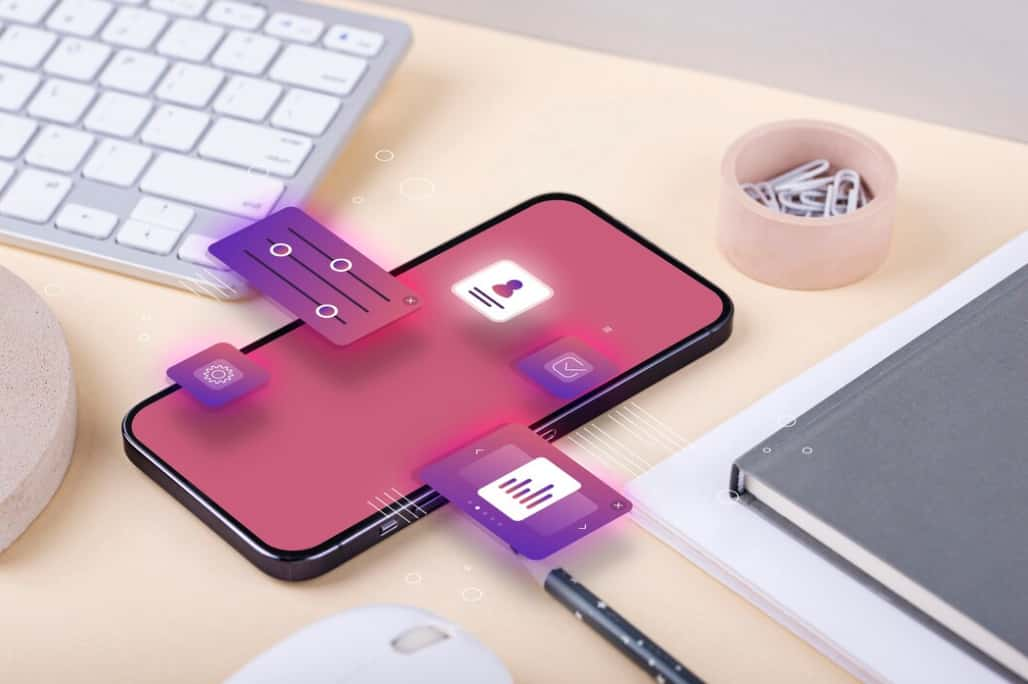The landscape of text generation is evolving, and it’s paralleled by the rapid advancement of technology. Applications are continually enhancing their performance to attract new users and customers. The pivotal role of usability cannot be overstated, as it ensures a seamless user experience. Therefore, it’s crucial to leverage one of the top 11 remote usability testing tools available to assess your application’s performance. While this article delves into the Top 10 Remote Usability Testing Tools for Superior UX Design, it’s important to recognize that regression testing, discussed in our article on Types of Regression Testing, also significantly impacts software quality and user experience.
Usability stands as a paramount concern for developers and app owners alike, seeking to capture the market’s attention. In today’s competitive environment, no user is willing to compromise on usability. It’s imperative to conduct usability testing through reputable testing firms to avoid the pitfalls of an unsuccessful app.
The Benefits of Utilizing Remote Usability Testing Tools
Remote usability testing tools offer a range of advantages that make them a preferred choice for many testers. These tools harness automation to expedite tasks far more efficiently than manual testing methods. This automation not only saves time but also reduces the workload on testers, allowing them to focus on other critical aspects of their work.
Moreover, these tools are equipped with sophisticated algorithms that enhance the accuracy and precision of the results they provide. This capability ensures that the usability status of any application is evaluated with a high degree of reliability. Therefore, choosing the right tool is essential to effectively assess the usability of an application, leading to more informed and efficient decision-making in the development process.
The Concept of Remote Usability Testing
Remote usability testing is a method of conducting user research that takes place in a user’s natural environment. It begins by remotely sharing the user’s screen through specialized software, allowing the tester to observe and gather insights.
The duration of the testing process can vary depending on the specific task being evaluated. Usability testing can encompass a wide range of elements, so it’s crucial to define clear objectives at the outset to optimize time and effort. On average, conducting usability testing for 8 to 10 everyday tasks typically requires approximately one hour, making it an efficient means of gaining valuable user feedback.
Appropriate Use Cases for Remote Usability Testing
Deciding when to employ remote usability testing in the software development process is a critical consideration. Testing is a multifaceted endeavor, and not every application necessitates every testing phase due to unique requirements.
Distinguishing between B2C (Business-to-Consumer) and B2B (Business-to-Business) applications is essential because their functionality and server configurations can significantly differ. While B2C apps may have more flexibility, B2B apps frequently demand usability testing and UX research. These assessments are pivotal for enterprises to maintain productivity and user satisfaction.
In this context, remote usability testing tools come into play. Testers utilize these tools for tasks such as screen sharing to identify and rectify issues, as well as to observe and address bugs within the system. Consequently, usability testing becomes particularly relevant for large-scale applications within closed circuits, ensuring the optimal user experience and performance.
Top 11 Remote Usability Testing Tools

| Tools |
|---|
| UserZoom |
| UserTesting |
| UsabilityHub |
| Validately |
| TestRail |
| HotJar |
| Crazy Egg |
| Userlytics |
| Lookback |
| Optimizely |
| TryMyUI |
UserZoom
UserZoom is a renowned and highly-regarded usability testing tool in the market, known for its consistent quality and efficiency. It boasts a range of incredible features, including an advanced search engine and default test participants.
In usability testing, the participants are of paramount importance, and UserZoom offers an easy option to access your own participants. The tool provides access to a pool of over 100 million potential participants at any given time, ensuring you have a diverse and ample selection.
UserZoom offers various plans, making it flexible to customize the plan to suit the specific needs of your project or company.
Key Highlights
- Suitable for small and medium-sized companies;
- Reasonable and customizable pricing;
- Access to ready participants.
UserTesting
UserTesting enjoys a substantial following, rivaling UserZoom’s popularity for several reasons. Both tools play a pivotal role in the usability testing landscape, offering similar features with differences primarily in their interface and pricing structures. UserTesting, in particular, shines with its ability to facilitate live conversations with participants without any significant delays.
The platform’s video recording feature is a standout, enabling you to capture crucial moments during the testing process. This feature proves invaluable for identifying and rectifying bugs based on specific business requirements, providing a comprehensive view of the issues and opportunities for enhancing performance.
Key Highlights
- Suitable for small and medium-scale operations;
- Affordable pricing options with customization;
- Comprehensive video recording of testing sessions.
Usability Hub
Usability Hub places a strong emphasis on providing a straightforward interface and user-friendly options to streamline what can often be a confusing and complex process. This platform has earned the trust of experienced professionals who appreciate its time-saving capabilities. The advanced heat maps feature has garnered significant attention for its data-gathering capabilities.
Usability Hub caters to both small-scale and medium-scale organizations due to its user-friendly approach. The reports generated by this tool empower designers to enhance performance by identifying and addressing glitches and bugs. UsabilityHub also offers the flexibility to use your own participants or select them directly from the platform.
Key Highlights
- Paid and Pro plans ranging from $80 to $396;
- Intuitive and user-friendly interface;
- Advanced heat maps for insightful data collection.
Validately
Validately is designed with simplicity in mind, offering straightforward features and user options to enhance usability. The platform focuses on providing a well-organized structure for studying cases and generating comprehensive reports. Validately allows users to set criteria easily for automated processing.
This platform ensures an effortless testing process by executing tests based on your commands and delivering results securely. The online video chat feature with other users is well-received because it eliminates the need to download external or third-party plugins or apps.
Key Highlights
- Multiple plan options available;
- Affordable enterprise pricing;
- No need for external downloads;
- Well-structured and organized interface.
TestRail
TestRail is a classic usability testing tool known for its timeless features. While user testing and segmentation options are commonly found across platforms, TestRail sets itself apart with its expert-friendly reporting capabilities. Its user-friendly reports make it easy for users to comprehend and take actionable steps based on the insights provided.
In the ever-evolving landscape of usability testing, tools need to stay current and adopt new and improved testing methods. TestRail actively engages with its user base by consistently rolling out updates and introducing new features. This commitment to innovation allows users to leverage the tool for a variety of testing activities.
Key Features
- Regular updates introducing new features;
- Cost-effective pricing plans;
- Well-suited for large-scale operations.
HotJar
Every tool has its strengths and weaknesses, and choosing the right one for specific tasks is essential to obtain accurate reports. HotJar, despite its ups and downs, excels in providing heatmap features that offer a clear view of user activity patterns. Users have the option to analyze the precise behavior of participants, which can be invaluable for improving click-through rates over time.
HotJar’s heatmaps provide comprehensive insights into user body language during interactions, making it a powerful tool for enhancing user experience. Additionally, the tool’s data visualization capabilities and necessary filtration process make it an essential asset for usability testing.
Key Highlights
- Outstanding heatmap functionality;
- Quality data visualization features;
- Educational content available;
- Free plan options.

Crazy Egg
Crazy Egg has earned its esteemed reputation in the industry through its consistent updates and cutting-edge features. A vast community of Crazy Egg enthusiasts relies on the tool’s diverse range of reports. These reports span different test sessions, offering testers comprehensive insights to work with.
One of Crazy Egg’s standout features is its high-quality heatmap options, making it a top choice among professionals worldwide. Additionally, the tool provides a scroll map feature, which helps identify regions of user interest. The insights from heatmaps and scroll maps empower users to strategically implement call-to-action buttons and other interactive elements.
Key Highlights
- Suitable for small and medium-scale organizations;
- Customized plans available;
- Effective heatmap and scroll map features.
Userlytics
Userlytics has gained recognition in the market for its robust and highly detailed filtering system. This system aids testers in identifying specific issues early in the testing process. Users can also apply filters to target particular audience segments, ensuring the delivery of high-quality results.
While Userlytics excels in filtering, it may present some challenges related to complex data visualization, especially when reports contain numerous elements. However, the precise filtration process is instrumental in segmenting studies effectively, ultimately saving time and effort.
Key Highlights
- Detailed and powerful filtering capabilities;
- Cost-effective pricing;
- Effective issue identification.
Lookback
Lookback offers valuable functionalities, including the ability to timestamp important points during recordings. This timestamp feature proves invaluable for testers dealing with large-scale applications, providing a clear record of key moments. Although this feature was initially popular, it faced competition from other applications with similar offerings.
Another standout feature is automatic recording, which serves as a crucial piece of evidence or documentation for both testers and clients. Lookback empowers users to retrieve and review conversations at their convenience.
Key Highlights
- Automatic recording of sessions;
- Timestamp functionality;
- Affordable paid plans.
Optimizely
Optimizely stands out as a user-friendly and streamlined tool, boasting a minimalistic feature set that requires no coding expertise for setup. It offers a welcoming dashboard for account setup and test activities, making it accessible to a wide range of users. Its reputation precedes it in the market, with many remote usability testing service providers favoring it for its comparative capabilities.
One of Optimizely’s notable strengths lies in its outstanding A/B testing feature, a widely recognized term in the realm of testing various elements. Optimizely’s A/B testing functionality is not only commonly used but also unrivaled in its effectiveness.
Key Features
- Robust A/B Testing;
- Code-free setup;
- Capability to test advanced technology pages.
TryMyUI
TryMyUI is a newcomer to the market, offering unique and valuable options for testers. It has garnered attention from experts due to its ability to facilitate testing of various prototypes in remote research studies. TryMyUI has swiftly gained a reputation as a reputable remote usability testing tool, thanks to its impressive impression testing and survey features.
Users of this tool enjoy a high degree of flexibility as it allows access to a database of recruited participants. In addition to the option of defining a specific target audience, the tool provides a readymade participant database that can be utilized as needed. The paid plans offer impressive database screening capabilities, although they may come with higher costs.
Key Highlights
- Access to a readymade participant database;
- Customizable pricing plans;
- Comprehensive database screening capabilities.
Conclusion
Understanding the concept of remote usability testing and familiarizing oneself with the popular tools available in the market is crucial for a successful testing endeavor. This knowledge serves as a foundation for commencing the testing process on the right foot.
The user testing process encompasses a diverse set of requirements, making it imperative to leverage moderated remote usability testing tools for effective results. The compilation of the top 12 remote usability testing tools discussed above provides valuable insights into their strengths and weaknesses, aiding in the selection of the most suitable tool for specific testing tasks.
